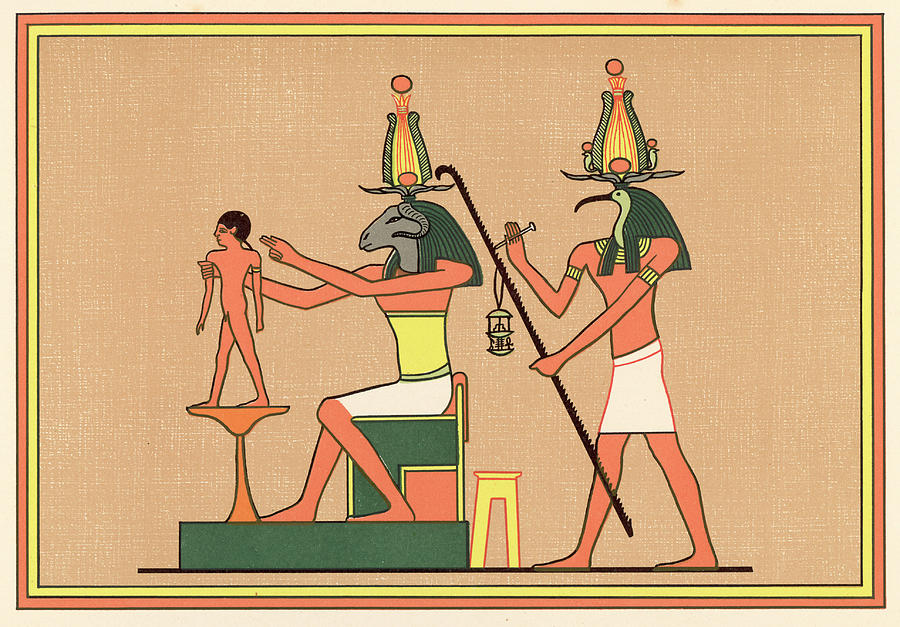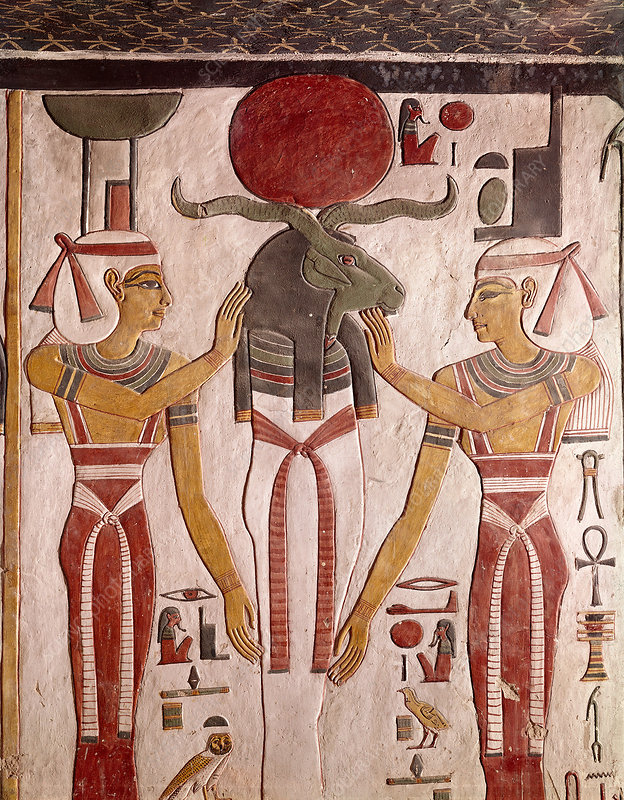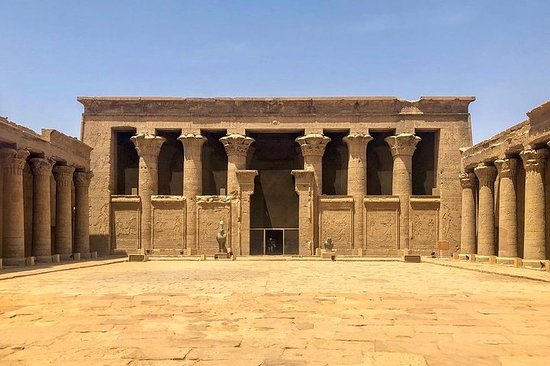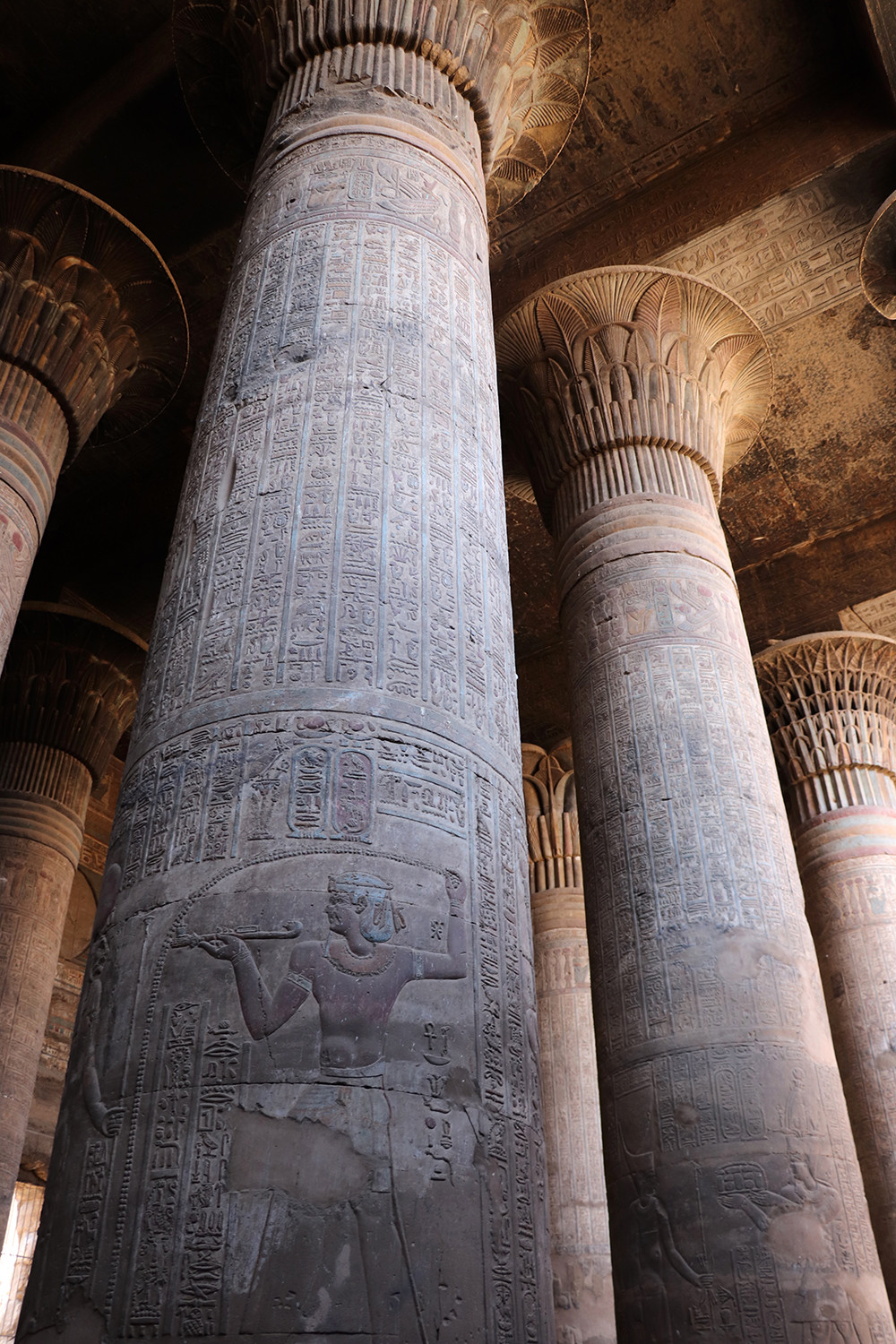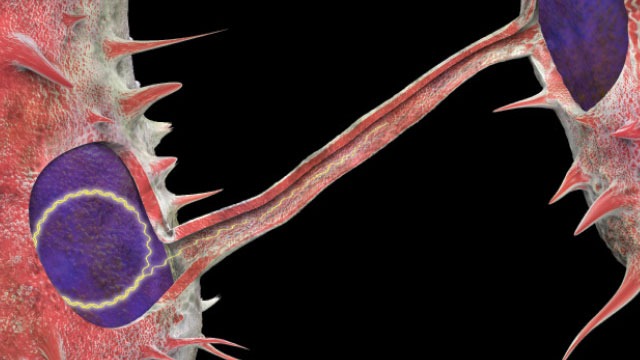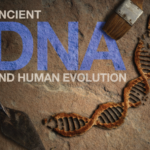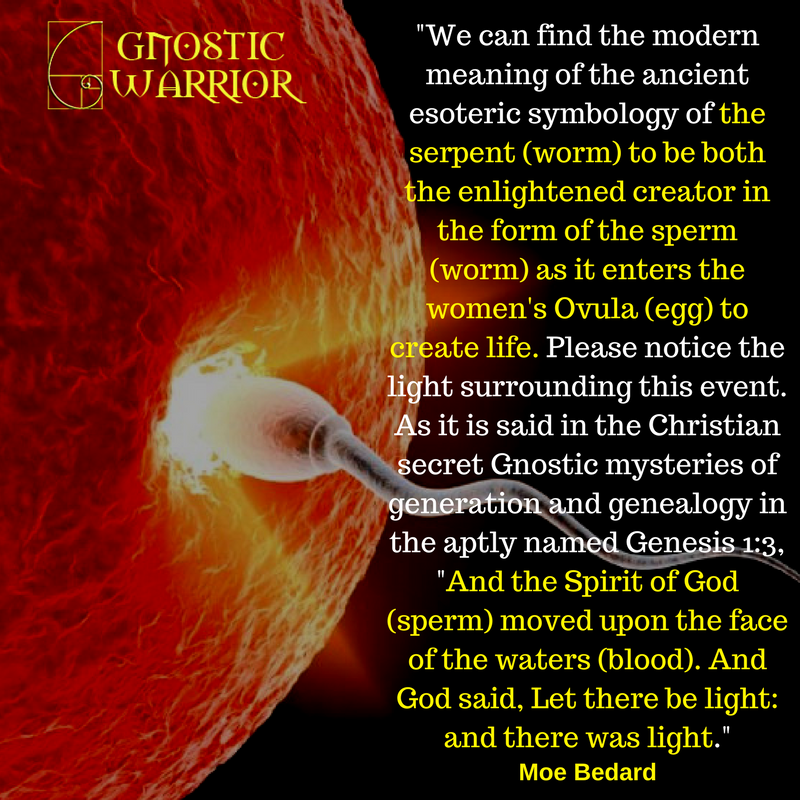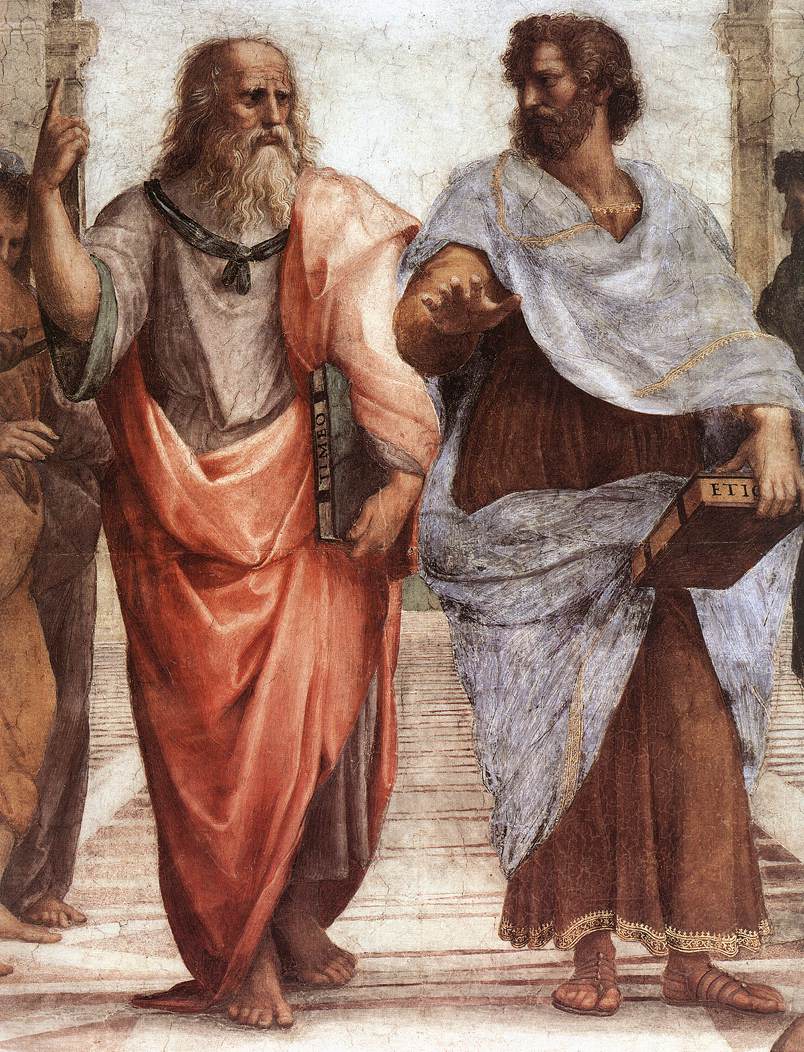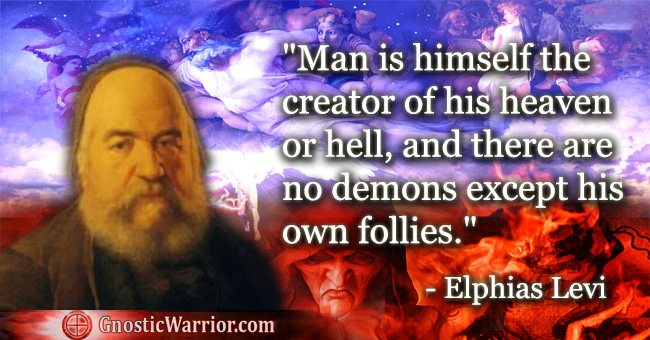In Ancient Egypt, the god, Khnum (Chnubis, Knubis, Chnum, Knum, or Khnemu) was a creator god credited with giving birth to all life and the Gods of Egypt. He was Chief of the Potter’s wheel, father of fathers and the Gods who makes women pregnant, was Lord of the air and the field.
In Egyptian mythology, he creates humans from clay, which he made at a potter’s wheel before placing them into their mother’s womb was one of the earliest Egyptian deities, originally the god of the source of the Nile.
He was later described as having molded the other deities as the “Divine Potter” and “Lord of created things from himself” and the “father of the fathers” and Neith as the “mother of the mothers” who later become the parents of Ra, who is also referred to as Khnum-Re.
He was depicted as a ram-headed man who was credited with molding the great cosmic egg and he is also associated with the goddess Maat (truth) and Thoth, the divine scribe.
The female Goddess of Justice and the Lower World, the Land of Ghosts, was called Maat (Mot, Mout or Mut). She was often depicted with the vulture headdress and sometimes a Lion’s head. In legends, she is “The opener of the nostrils of the living.”
The Temple of Khnum, also known as the Temple of Esna, is a magnificent structure located approximately 485 miles south of modern Cairo that sits on the west bank of the Nile. It is built of red sandstone, with a grand portico composed of twenty-four columns decorated with unique lotus leaf details with distinctive Grecian and Roman styles.
The temple was unique to other Egyptian Templed because it was built approximately nine meters below ground level, and the part of the temple is buried underneath the modern town. As a result, the temple sits in a hollowed-out pit or valley, possibly due to its association with the underworld.
Inscriptions carved upon the temple walls tell us the attributes of this God, the sacred history surrounding his rule, and special instructions about the code of conduct expected from visitors entering the temple who were expected to be ritually pure by washing themselves and removing all body hair, cut finger, and toenails, and to have abstained from sexual relations for several days.
The temple was first started by the Egyptian King Tuthmosis III of the 18th Dynasty but was later finished by the Grecian Ptolemaic and Roman Emperors, from 40-250 A.D. It played a significant role in the late Egyptian Empire during the Greco and Roman rule, which various reliefs and inscriptions show us the Ptolemaic and Roman Emperors dressed in Pharaoh costumes, offering sacrifices to the God Khnum. The Roman Emperor Claudius had rebuilt and extended earlier buildings and was connected to the Nile by a quay built by Roman emperor Marcus Aurelius (AD 161–180)
The back wall, to the northeast, constructed during the Ptolemaic period, features reliefs of two Ptolemaic pharaohs, with the earliest being mentioned is Ptolemy V, who is seen offering a libation by his son Ptolemy VII Euergetes (170–116 BC). Quite a few Roman emperors, including Domitian, Septimus Severus, Caracalla, and Geta, had their names etched near the hall’s rear gateway.
Roman Emperor Trajan, carried by six Priests, with jackal and hawk masks of the gods, adorn each room’s entrance, and on the roof, Emperor Trajan is seen dancing before the goddess Menhet. The northern wall shows Emperor Commodus catching fish in a papyrus thicket with the God Khnum, and at the foot of this representation is the last known hieroglyphic inscriptions ever recorded, completed by the Roman Emperor Dios in 250 A.D.
The columns were inscribed with ancient texts describing the religious rituals and hymns to the God Khnum, in which we learn about his various powers and attributes.
The first is a morning hymn to awaken Khnum in his shrine; the second is a beautiful ‘hymn of creation’ that acknowledges him as the creator of all, even foreigners:
‘All are formed on his potter’s wheel, their speech different in every region, but the lord of the wheel is their father too.’
The temple gained international attention when the French Emperor Napoleon Bonaparte had conquered Egypt in 1798 when he brought along an ‘army’ of scholars to study Egypt’s ancient secrets and history. As a result, Bonaparte created The Institut d’Égypte or Egyptian Scientific Institute, which is a learned society in Cairo specializing in Egyptology whose mission was “progress and the propagation of the Enlightenment in Egypt.”
The excavation of the Temple of Khnum was spearheaded by the French Egyptologist Serge Sauneron (1927-1976), who published his research and the transcription of the inscriptions in full. Here are a couple of hymns to Khnum showing us how important he was as the main God and Father of all depicted on Esna Column 15 (353-363).
The Ba of Re,
who came about in the beginning,
he rejoices to see him
every day.
He makes for him a property deed
in his name,
its limits are all eternity.
Khnum-Re Lord of the Field.
father of fathers,
who begat gods, people,
and likewise all animals.
Their faces are turned back
to the place where (he) is,
beseeching their lives from him.
Khnum-Re Lord of Esna.
The praises
for this august god:
O he who sits upon his serekh,
populating every place.
O he who goes around the two lands in life
to enliven those who are within them.
O Chief of the Potter’s Wheel,
who builds as he desires.
O lord of air,
who endows life to those whom he created.
O ejaculating bull,
who makes semen into/from bones.
O he who makes women pregnant
through that which he did.
O beneficent father,
who binds together the excellent seed.
O he who forms gods, men,
and all animals
upon his potter’s wheel.
O he who built the Lord
in order to guide the two lands.
O he who created the papyrus stalk
for the goddess who is with him.
O he he distinguished whomever he desires inside wombs.
O he who creates the egg
in accordance with his mind.
O he who enlivens babies with his breath.
O he ruptures the amniotic sac at its time.
O he helps nourish what he made
inside all wombs.
O he who acts as King of the Gods (Amun)
and whose manifestation builds on the wheel.
O he who makes a path
for the not-yet-breathing in his form.
[O he who allows nos]trils [to breathe] with air.
[O he] who endows the body with life.
O he whose rewards are building and enlivening.

Moe is the founder of GnosticWarrior.com. He is a father, husband, author, martial arts black belt, and an expert in Gnosticism, the occult, and esotericism.

